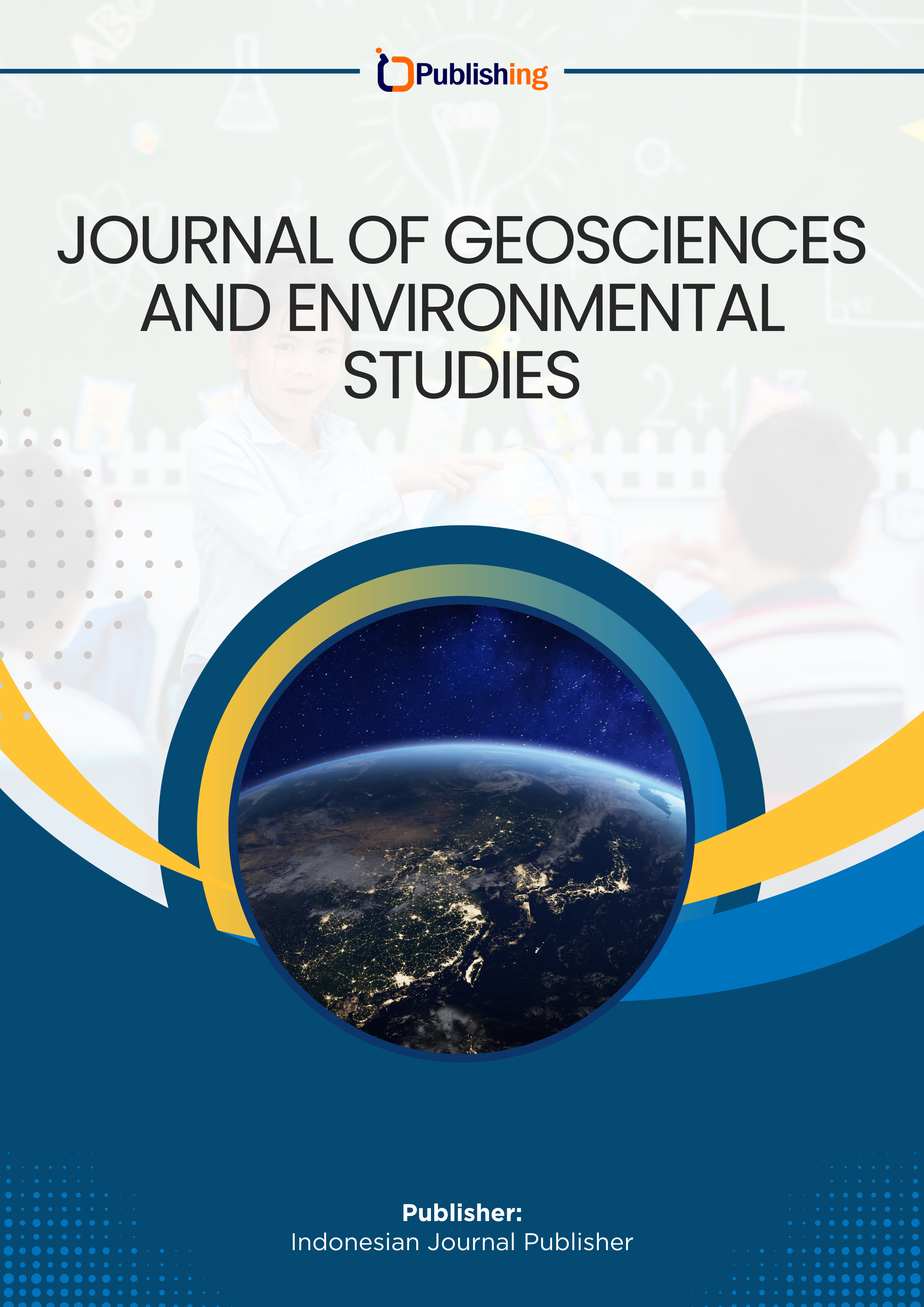Role of Women in Disaster Management: An Assessment Study in Kurigram and Patuakhali Districts of Bangladesh
DOI:
https://doi.org/10.53697/ijgaes.v2i2.3930Keywords:
Gender Responsive, Women’s Participation, Social Factors, Disaster Management, Vulnerable, Adaptive CapacitiesAbstract
Women are the most marginalized and vulnerable to disasters due to disadvantaged socio-economic status and unequal access to resources in Bangladesh. Common perceptions paint women as dependent, weak, incapable, and subordinate, viewing them as burdens, which keeps them isolated from the mainstream processes of society, like planning and decision-making. The present study was conducted in the Kurigram and Patuakhali districts of Bangladesh. It aimed to explore women's role in disaster management, focusing on the nature of their involvement and different social factors that influence women's participation. Primary data were collected through 203 questionnaires from two districts, and 4 FGDs were conducted to validate and cross-check the data obtained from the questionnaires. 2 Expert opinion surveys have been conducted in the study area. The data reveals the present condition of women's participation in disaster management processes and their undervalued contribution in different stages, different factors influencing their active participation, the evolution and future perspectives about their involvement in disaster management. Participants reported that a lack of educational awareness programs and work independence hinder their active participation in disaster management. Findings highlight a significant gap regarding the current gender responsive disaster management policies. The result highlights that it is necessary to ensure their contributions are recognized at all levels of disaster management.
References
ADB, & UNDP. (2013). Asia-Pacific aspirations: Perspectives for a post-2015 development agenda. Asia-Pacific Regional MDGs Report 2012/13. Bangkok: Asian Development Bank & United Nations Development Programme.
Ahmad, N. (2012). Gender and climate change in Bangladesh: The role of institutions in reducing gender gaps in adaptation programs (Social Development Working Papers). Washington, DC: World Bank.
Alam, K., & Rahman, M. H. (2014). Women in natural disasters: A case study from southern coastal region of Bangladesh. International Journal of Disaster Risk Reduction, 8, 68–81. https://doi.org/10.1016/j.ijdrr.2014.01.003
Alston, M. (2015). Women and climate change in Bangladesh. Routledge.
Anderson, M. (1994). Understanding the disaster-development continuum: Gender analysis is the essential tool. Gender and Development, 2(1), 7–10.
Blaikie, P., Cannon, T., Davis, I., & Wisner, B. (1994). At risk: Natural hazards, people's vulnerability, and disasters (1st ed.). Routledge.
Cannon, T. (2002). Gender and climate hazards in Bangladesh. Gender and Development, 10(2), 45–50.
Chowdhury, M. (2001). Women’s technological innovations and adaptations for disaster mitigation: A case study of Charlands in Bangladesh. Prepared for DAW/ISDR Expert Group Meeting on “Environmental Management and the Mitigation of Natural Disasters: A Gender Perspective,” Ankara, Turkey.
Climate Change Cell. (2009). Climate change, gender, and vulnerable groups in Bangladesh. Dhaka: Department of Environment, Ministry of Environment and Forests; Comprehensive Disaster Management Programme, Ministry of Food and Disaster Management.
Dankelman, I. (2010). Introduction: Exploring gender, environment, and climate change. In I. Dankelman (Ed.), Gender and climate change: An introduction (pp. 1–18). Routledge.
Department for International Development (DFID). (2004). The impact of climate change on the vulnerability of the poor. United Kingdom: Department for International Development.
Duddy, J. (2002). Is climate change a gender issue? Association for Women's Rights in Development (AWID). Toronto, Canada.
Fatema, S. R., East, L., Islam, S., & Usher, K. (2023). Gender-based vulnerabilities for women during natural disasters in Bangladesh. Frontiers in Communication, 8, 1180406. https://doi.org/10.3389/fcomm.2023.1180406
Galleto, G., & Evelyn, C. (2020). Vulnerability of the role of women in disaster management based on preparedness, response and recovery phases. http://dx.doi.org/10.13140/RG.2.2.16306.15040
Government of Bangladesh (GoB). (2008). Cyclone Sidr in Bangladesh: Damage, loss, and needs assessment for disaster recovery and reconstruction. Ministry of Finance, Economic Relations Division. Dhaka: Government of the People’s Republic of Bangladesh.
Gokhale, V. (2008, October). Role of women in disaster management: An analytical study with reference to Indian society. Paper presented at the 14th World Conference on Earthquake Engineering, Beijing, China.
Hasan, M., Nasreen, M., & Chowdhury, M. A. (2019). Gender-inclusive disaster management policy in Bangladesh: A content analysis of national and international regulatory frameworks. International Journal of Disaster Risk Reduction, 41, 101324. https://doi.org/10.1016/j.ijdrr.2019.101324
Ikeda, K. (1995). Gender differences in human loss and vulnerability in natural disasters: A case study from Bangladesh. Indian Journal of Gender Studies, 2(2), 171–193.
Intergovernmental Panel on Climate Change (IPCC). (2007). Climate change 2007: Impacts, adaptation and vulnerability. Contribution of Working Group II to the Fourth Assessment Report of the Intergovernmental Panel on Climate Change. Cambridge University Press.
Khan, A., Rana, I., & Nawaz, A. (2020). Gender-based approach for assessing risk perception in a multi-hazard environment: A study of high schools of Gilgit, Pakistan. International Journal of Disaster Risk Reduction, 44, 101427. https://doi.org/10.1016/j.ijdrr.2019.101427
Khondker, H. H. (1996). Women and Floods in Bangladesh. International Journal of Mass Emergencies & Disasters, 14(3), 281-292. https://doi.org/10.1177/028072709601400302
Marino, E., & Ribot, J. (2012). Special issue introduction: Adding insult to injury. Global Environmental Change, 22(2), 323–328. https://doi.org/10.1016/j.gloenvcha.2012.03.001
Nakashima, D., McLean, K. G., Thulstrup, H. D., & Castillo, A. R. (2012). Weathering uncertainty: Traditional knowledge for climate change assessment and adaptation. Paris, France: UNESCO and United Nations University.
Nasreen, M. (2010). Rethinking disaster management: Violence against women during floods in Bangladesh. In S. Dasgupta (Ed.), Women’s encounter with disaster (pp. xx–xx). London: Frontpage Publications.
Nasreen, M. (2012). Women and girls vulnerable or resilient? Institute of Disaster Management and Vulnerability Studies, University of Dhaka.
Neumayer, E., & Plümper, T. (2007). The gendered nature of natural disasters: The impact of catastrophic events on the gender gap in life expectancy, 1981–2002. Annals of the Association of American Geographers, 97(3), 551–566. https://doi.org/10.1111/j.1467-8306.2007.00563.x
O’Brien, G., O’Keefe, P., Rose, J., & Wisner, B. (2006). Climate change and disaster management. Disasters, 30(1), 64–80. https://doi.org/10.1111/j.1467-9523.2006.00307.x
Shafakat, N. M., Nitisha, F. M., & Nusaka, S. S.-U. (n.d.). Gender disparity in disaster management. The Financial Express. Retrieved May 16, 2025, from https://today.thefinancialexpress.com.bd/29th-anniversary-issue-3/gender-disparity-in-disaster-management-1670324869
United Nations Development Programme (UNDP). (2024). Bangladesh: Empowering women with climate-resilient livelihoods | Data Futures Exchange. https://data.undp.org/insights/evidence-informed-interventions/BGD
United Nations Development Programme (UNDP). (2015). Gender and disaster risk reduction in Nepal: A case study from the Koshi Basin. Kathmandu: UNDP Nepal.
World Bank. (2006). Bangladesh country environmental analysis (Bangladesh Development Series Paper No. 2). South Asia: Environment and Social Unit, World Bank.
Downloads
Published
How to Cite
Issue
Section
License
Copyright (c) 2025 Hossain Al Mahbub, Samrina Jamal, Mijanur Rahman, Muhammad Muhibbullah

This work is licensed under a Creative Commons Attribution-ShareAlike 4.0 International License.














